
Feel free to add tags, names, dates or anything you are looking for
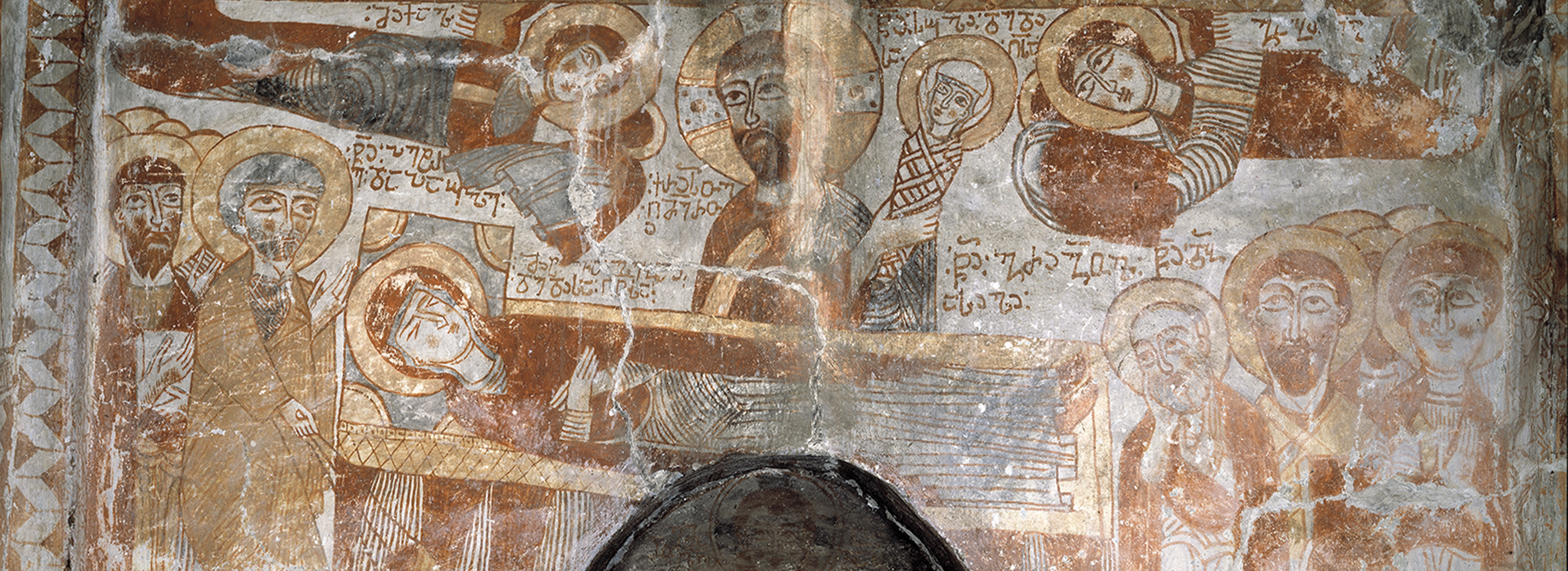

A small single-nave church dedicated to St. Barbara (Barbal) is located in the village of Khe in the Kala community, Upper Svaneti. It was built of well-cut stones at the turn of the 11th century. The vault of the church is supported by an arch resting on pilasters that divide the side walls into two compartments, each of which features blind arches.
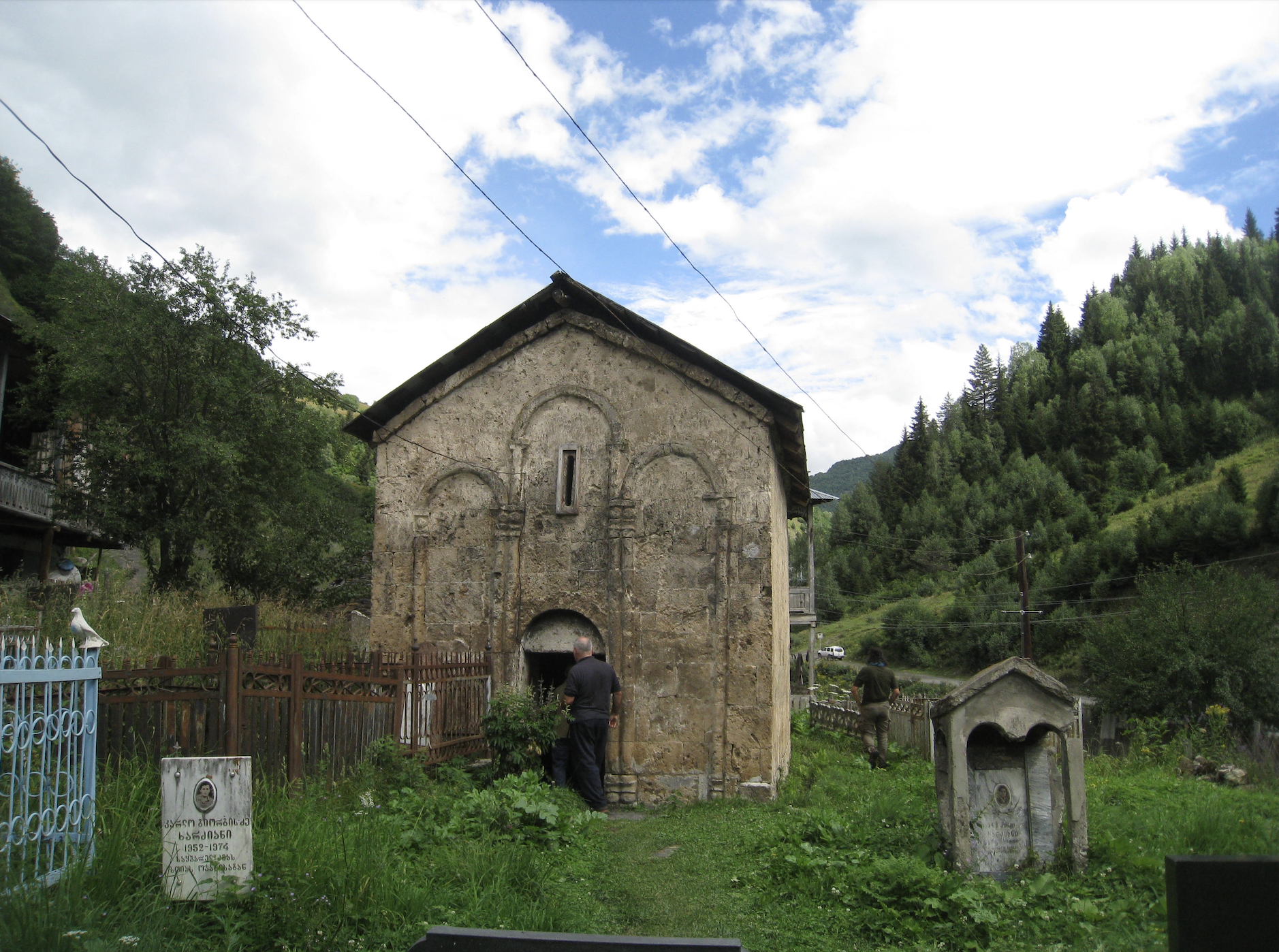
Church of St. Barbara (Barbal) in the village of Khe, Upper Svaneti, C11th
The interior of the church is adorned with murals that date from the 13th century. They represent examples of the commonly termed “folk” paintings that are to be found in a number of Svanetian churches dating from the same period, and which became extremely popular throughout Georgia in the 16th century.
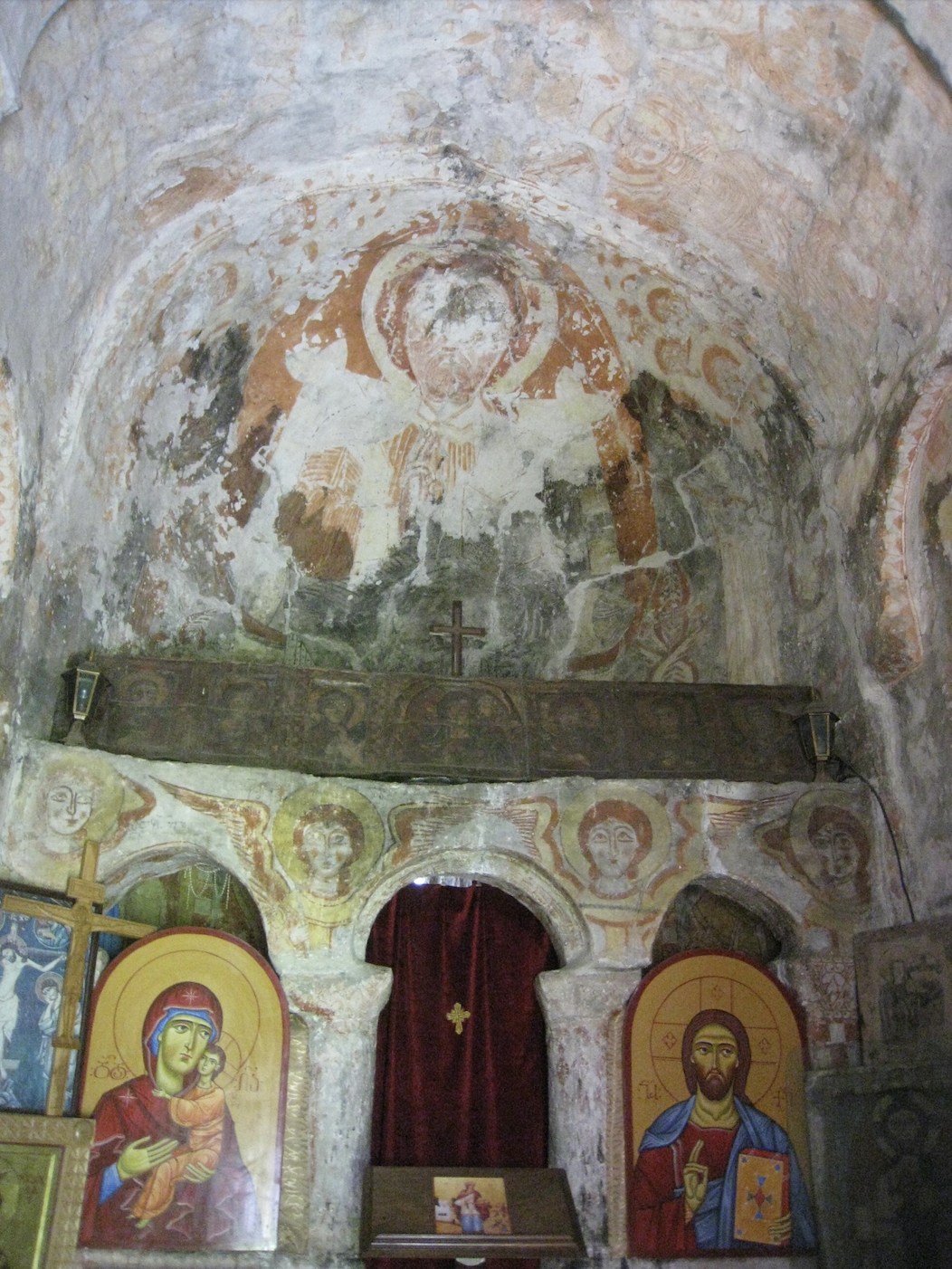
Church of St. Barbara, sanctuary and chancel barrier, C13th
The program of the painting is in keeping with the typical content of church murals in Svaneti: namely the Deesis with accompanying archangels and a host of angels, a cherub and a seraph depicted in the sanctuary conch, and a row of half-figures of the Holy Bishops portrayed on the wall of the apse. Under the eastern window, an image of the Mandylion – the Holy Face, a symbol of Incarnation – is depicted.
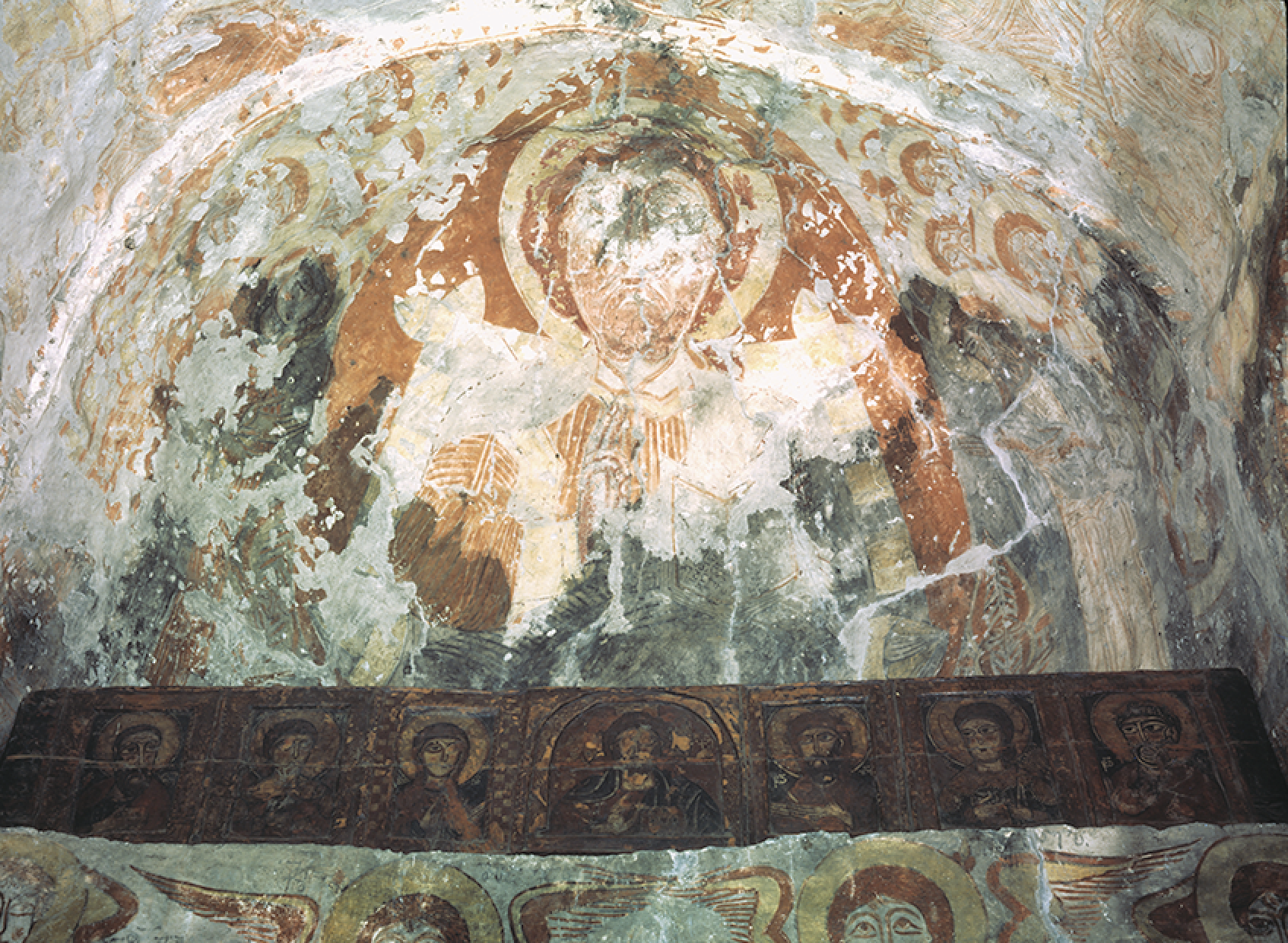
Church of St. Barbara, sanctuary and chancel barrier, C13th
The rendering of the images of the Holy Bishops is rather unusual – they are portrayed as frontal half-figures within frames that have plain geometrical ornamentation, which creates the illusion of icons hanging on the wall. Such imitation of painted icons is quite unique with regard to images of the Holy Bishops, and may be observed in certain paintings in the Balkan region – among them in Bachkovo (a Georgian monastery in Bulgaria).

Church of St. Barbara, sanctuary, the Holy Bishop, C13th
The chancel barrier features half-figures of the Archangels that have upward directed wings, and who are clad in imperial vestments. Their names are indicated in the Georgian Asomtavruli script (Gabriel, Michael, Raphael, and presumably Uriel).

Church of St. Barbara, the Holy Archangels, painting on the chancel barrier, C13th
It is worthy of note that the church interior has preserved the epistyle, with painted icons on the upper section of the chancel barrier and several painted icons in front of it, which date from the same period and were presumably painted by the same artist, and which create a unified ensemble with the murals. It is quite a rare occasion when icons and murals from the same period are preserved in one church.
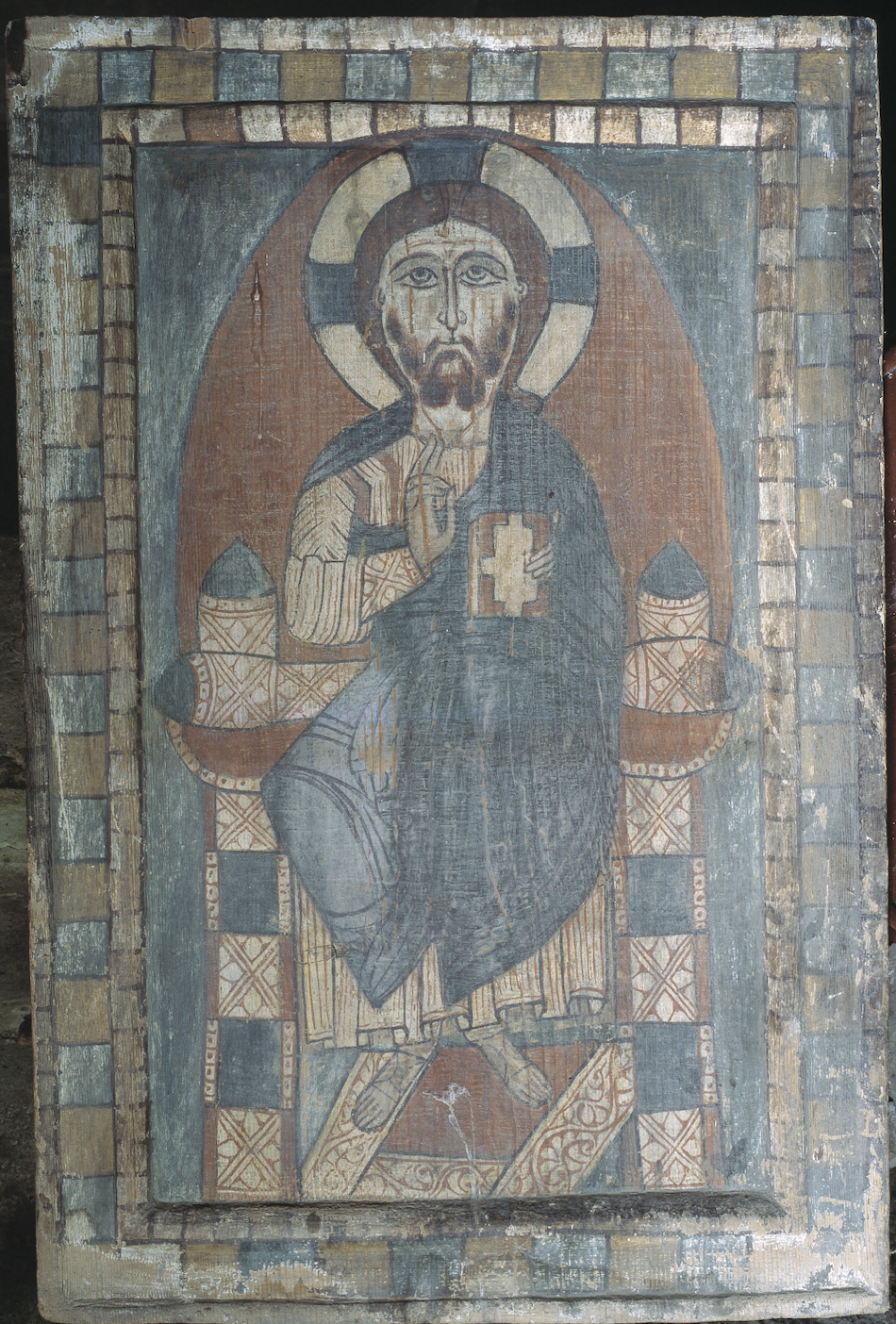
Church of St. Barbara, painted icon of Christ Pantocrator, C13th
On the vault and the west wall of the church, a cycle of the Great Feasts is presented; although there are only six images, and they were mainly executed in abbreviated form (the Annunciation, the Nativity, the Presentation in the Temple, the Baptism, the Pentecost and the Dormition of the Virgin).
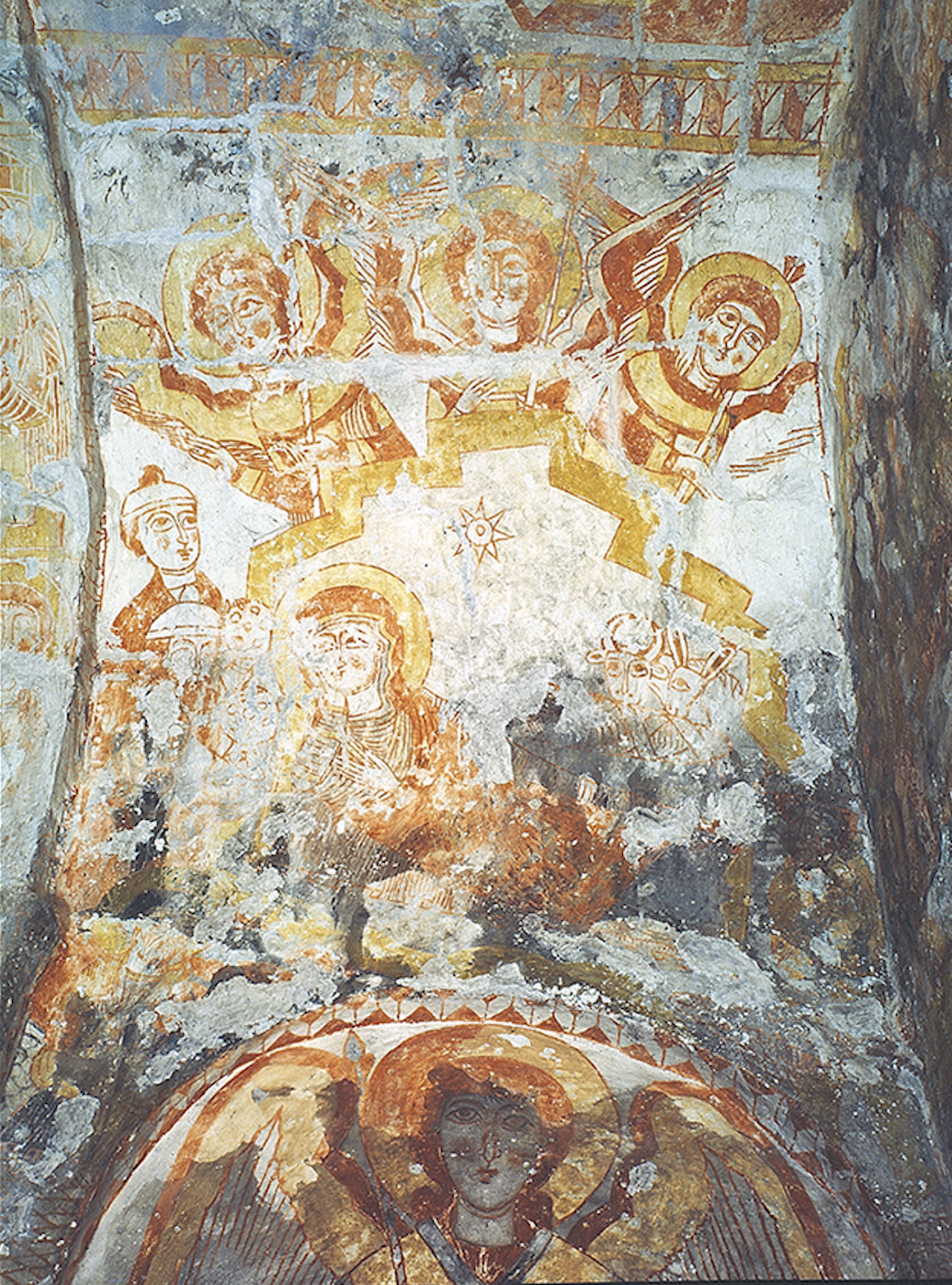
Church of St. Barbara, the Nativity, C13th
Under the blind arches on the north and south walls of the church, two large figures of archangels are depicted (Michael on the north wall and Gabriel on the south wall) in the western section; while two female saints – namely St. Barbara and St. Catherine – are portrayed in the eastern section. It is noteworthy that these figures are remarkably larger in scale than the other figures in the murals – even those depicted in the Deisis composition. They are presented frontally, attired in imperial garments with loros, holding orbs and standards, and striking very solemn postures – the appearance of which induce the principal accents in the painting. The female saints are represented in a similar manner, wearing imperial dresses and crowns. They evoke an impression of monumentality, particularly in this small space.
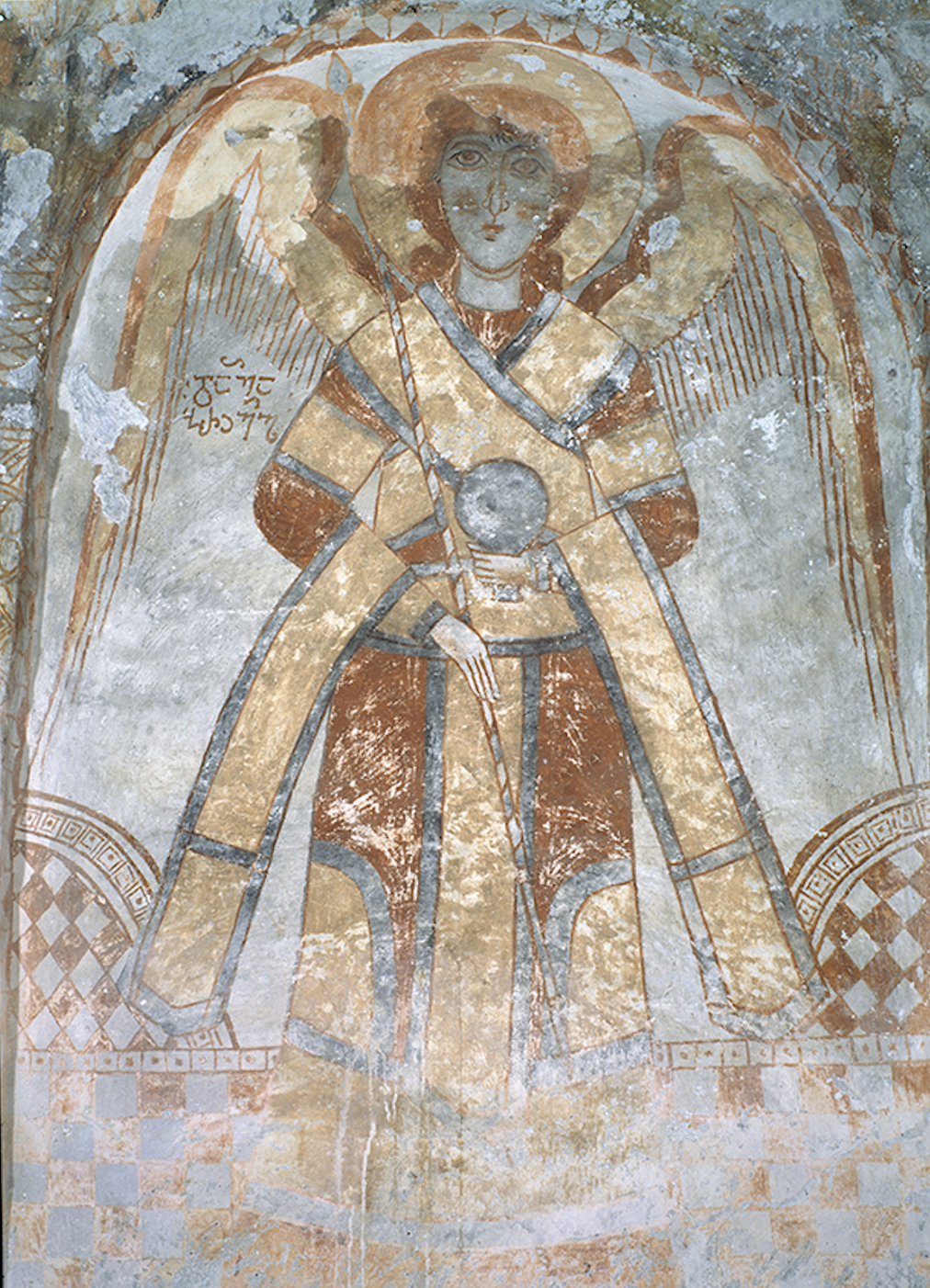
Church of St. Barbara, the Archangel Gabriel, C13th
On the pilasters of the supporting arch and in the jambs of the windows and doors, pale silhouettes have been preserved of the figures of different saints.
The murals in Khe display all the features characteristic of the trend of what are commonly termed “folk” paintings: simple artistic rendering, enlarged eyes of a specific shape, round red spots on the cheeks, almost no modeling, a somewhat crude and schematic drawing technique, the distorted proportions, flat rendering, and above all a very basic color palette – white, gray, yellow and red pigments, with red outlines and details. The compositions are overloaded, and lack even a slight indication of depth. At the same time, as noted above, the overall impression is of solemnity and monumentality.

Church of St. Barbara, St. Catherina, C13th
Regarding the coloring, it should be noted that in some places faint remnants of dark blue (or black) outlines can be discerned, which permits us to assume that the artistic treatment had originally been more elaborate than what we can now observe, and that the coloring had been much richer. Due to its extremely pale color palette, the entire space seems to be filled with light. All of the inscriptions were executed in the Georgian Asomtavruli script, albeit not in a particularly calligraphic manner.

Church of St. Barbara, the Dormition of the Virgin, fragment, C13th
The murals could be judged as being primitive were it not for the expressive and eloquent overall design, the impressive coloring and monumental layout, as well as the attractive and naive expressions on the faces – with a faint smile on the lips that is also characteristic of folk paintings.
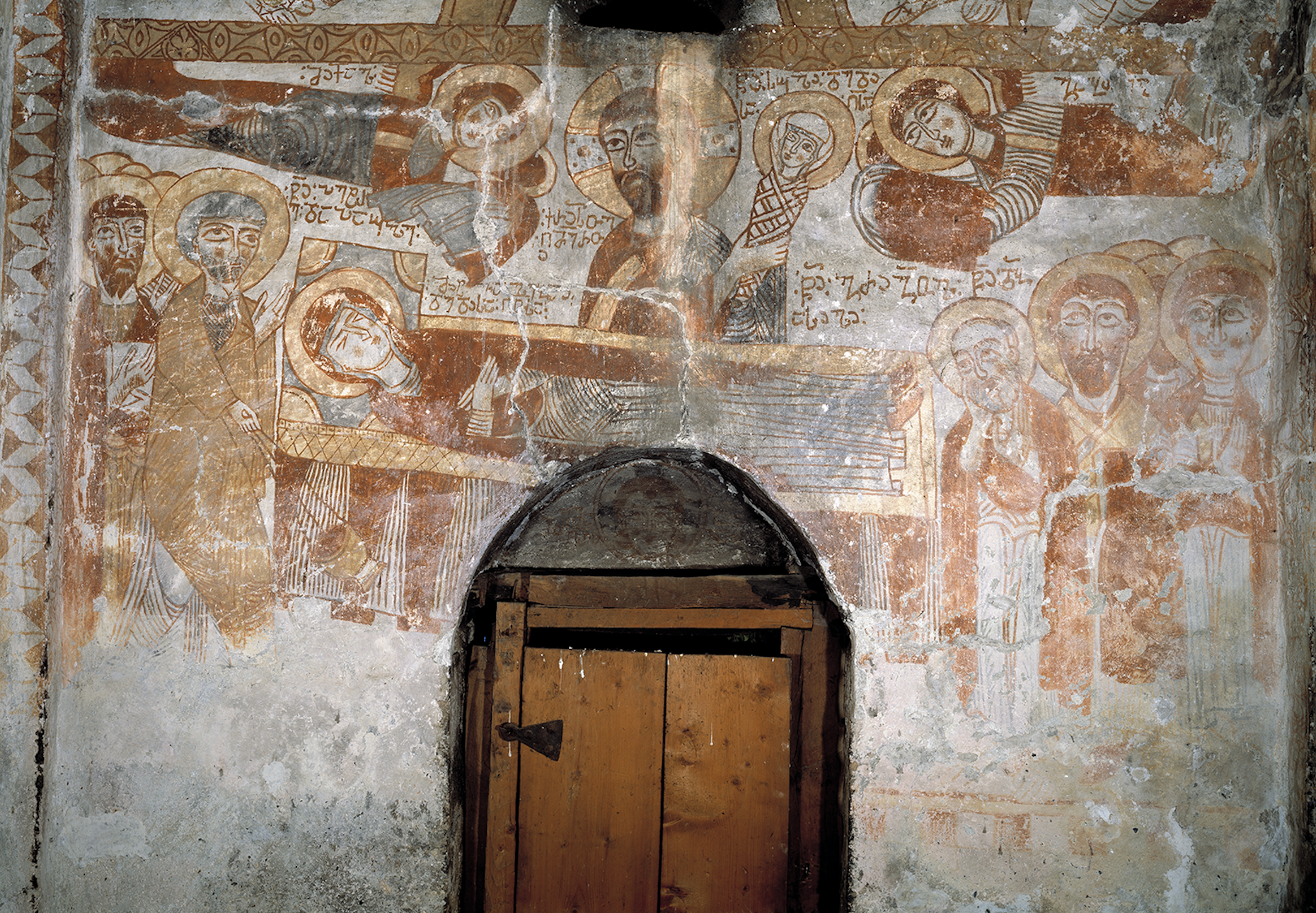
Church of St. Barbara, the Dormition of the Virgin, fragment, C13th
Although the church is dedicated to St. Barbara (Barbal), and her figure is portrayed on the north wall next to the sanctuary in an representative manner, the theme of the archangels seems to have been deliberately highlighted in every possible way. For example, in the composition of the Nativity, three large figures of angels are beautifully placed around the hill over the Nativity Grotto, and more importantly, they are wearing imperial garments with loros. Such representation of the archangels in imperial garments on the chancel barrier is a rather rare example in Eastern Christian painting. The placement of two large figures of archangels under the south and north blind arches next to the figures of female saints is also a rather impressive and attractive artistic choice. Based on these facts, scholars posit that the church had initially been dedicated to the archangels – which was common practice in Upper Svaneti.